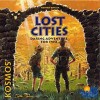
MarkyX
gamer level 1
230 xp
230 xp
followers
5
5
Use my invite URL to register (this will give me kudos)
https://boardgaming.com/register/?invited_by=markyx
profile badges
...
...
...
...
recent achievements

My First Wish!
Add a game to your Wish List by clicking the "Want It" button on a game page.
Add a game to your Wish List by clicking the "Want It" button on a game page.

Gave My First Grade
Grade a gamer's review or tip by clicking "Yes" or "No" in response to the question "Was this helpful?"
Grade a gamer's review or tip by clicking "Yes" or "No" in response to the question "Was this helpful?"

I'm a Player!
Claim that you have played a game today by clicking the "Played Today!" button on a game page.
Claim that you have played a game today by clicking the "Played Today!" button on a game page.

Rated 5 Games
Rate 5 games you have played.
Rate 5 games you have played.










Cosmic Encounter
Gamers who graduate from the Monopoly and Sorry phase tend to share a similar preference with one another. They tend to look for games that have the layout changed each game. They also want games that force them to make tough decisions, yet have rules that are simple enough to fit into one page. The biggest feature they want, or lack of it, is luck. In fact, having a game that has a roll and move mechanic in these great times is a legal reason to commit arson. This doesn’t mean luck doesn’t exist in these modern board games, but it’s not longer the dominating factor on whether or not you win.
When Fantasy Flight Games, the boys behind the most overproduced games in existence, announced a reprint of Cosmic Encounter, I was expecting the very reality I know to collapse. After all, we’re hardcore gamers now and things like luck-based games are beneath us.
So why didn’t the world end? Because gamers actually wanted this game. These same gamers that love Settlers of Catan, Ticket to Ride, and Carcassone are suddenly interested in a game that is entirely driven by the heart of the cards. You can’t even choose your own target when it is your turn to attack; it’s all done by the Destiny deck which tells you who you are going to strike. In other words, don’t get friendly with your “allies”, because you might be forced to vaporize their entire race with your death cannons because the cards told you too.
But why would you vaporize your friends, you may ask? Because the entire point of this game is to get 5 foreign colonies and you can do this in a diplomatic fashion or by committing several genocide attempts. Since this game does take place in Space, you have alien powers to work with. These alien powers have a way to break the game apart and cause problems for both you and your “friends.” For example, those Zombies? They can’t die. What about that Loser? He wins by losing the fight. Everyone gets one alien power that does all sorts of wackiness and there are fifty alien powers that come with this game.
As for the game play itself, it’s quite simple. Each turn, you draw from the destiny deck and it will tell you who your target is. So you pick a planet to invade, throw in 1 to 4 ships, and ask people to come join in the invading party. The victim asks for allies as well, in attempts to save his hide. The other players then decide who they want join by sending 1 to 4 ships, or they can just say “screw you guys, I’m going home.” Once everyone has decided who to join or bow out, both the offensive and defensive player put an Encounter card face down. These cards have a fancy big black number on it and once both sides put the cards face down, they are revealed. The winner is the side who has the bigger number after adding all the ships on their side plus the Encounter card.
That’s pretty much the game right there. There are other cards, like Artifact cards that fudge the rules even further and Reinforcement cards that can change the outcome of close battles. Otherwise, the game is literally just “draw a card for your target, throw in ships, invite allies, and get the highest number.” Why does this work?
Because the entire game is about diplomacy. There are many ways to screw around with your neighbor’s heads and with the alien powers in play, people might either ignore, hate, or like you. In fact, being a game made in the 70s, Cosmic Encounter is a very good early example of abusing the metagame.
The other key factor of Cosmic Encounter’s greatness is the opportunity cost and decision making. Your encounter cards, much like the rest of the game, is entirely random. Sometimes you need to figure out on whether or not you should play your strongest card, and get into your opponent’s head if they have strong cards as well. Sometimes you might not even think about your opponent at all, since you have a terrible hand but must use these cards. You can try to take advantage of your terrible cards by inviting allies and sabotage them, but they’ll hold a grudge for the rest of the game. Do you do it, or just play it safe?
It’s these type of diplomatic situations and bluffing that makes Cosmic Encounter such a great game. It’s quite easy to learn if you are a veteran gamer (especially if you are from hail from the CCG) and the alien powers make the game have an incredible amount of replayability. The base game alone comes with fifty alien, which is more than enough to keep you occupied for a very long time.
Pros:
– Nice artwork
– Easy to learn rules
– Tons of replayability
– Screwing over your friends is encouraged
Cons:
– Don’t play this with three people
– You will hate this game if you loathe luck